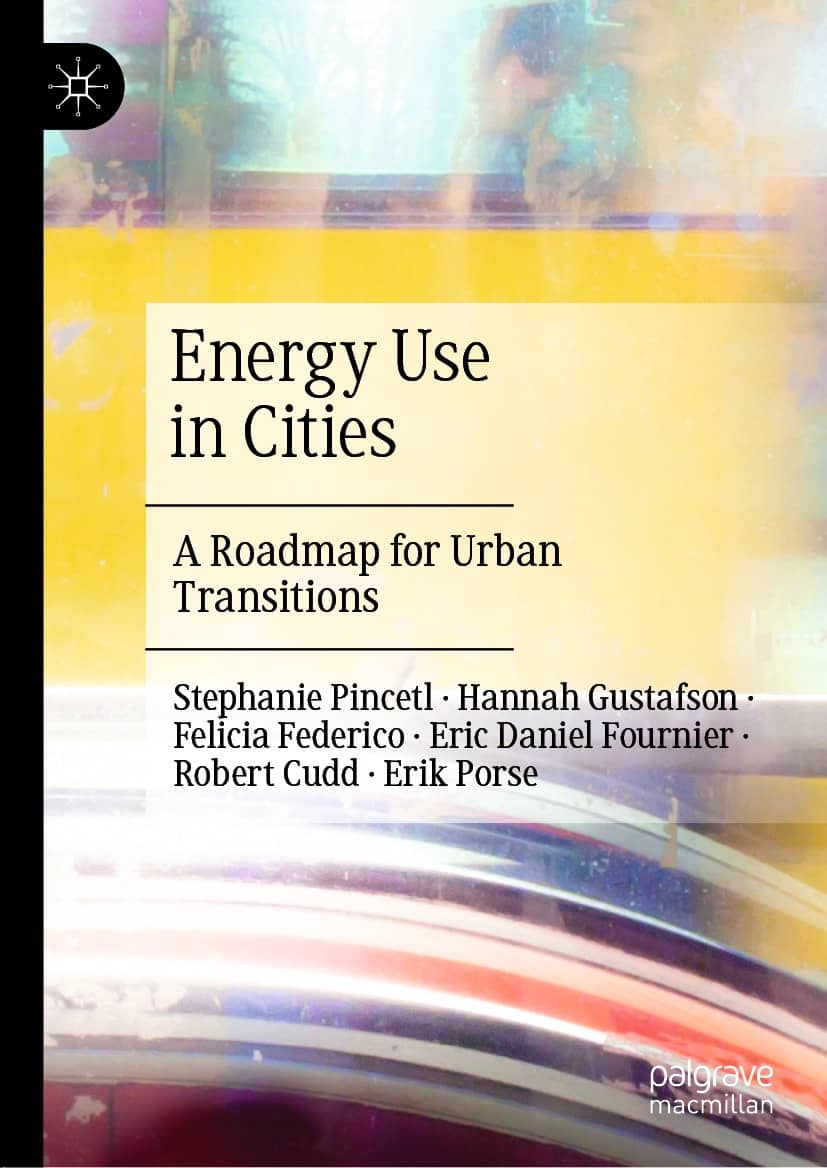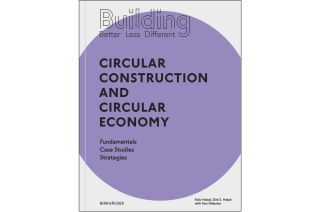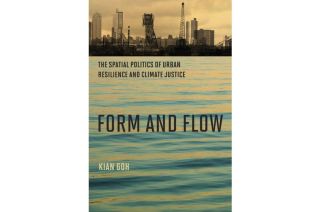
www.buildingsandcities.org/insights/reviews/energy-use-cities.html
Energy Use in Cities: A Roadmap for Urban Transitions
By S. Pincetl, H. Gustafson, F. Federico, E.D. Fournier, R. Cudd & E. Porse. Palgrave Macmillan, 2020, ISBN: 9783030556013
Dominic Humphrey reviews this book which offers a practical approach for an equitable transition to net zero. It explains how different stakeholders can enable cities to adapt to changing climate. Thanks to its accessible language, the book will be of interest to a wide readership - from policymakers and researchers to parts of the general public.

This book covers a remarkable breadth of topics across a compact seven chapters. The breadth is necessitated by the subject matter and authors' ambition to construct an 'energy atlas' for the state of California from the most granular data available. An energy atlas is a database that brings together data on energy supply and demand, greenhouse gas (GHG) emissions from energy generation, and socio-economic and demographic data. These are presented using visualisation (e.g. maps and charts) alongside detailed attributes on the built environment from a building stock model. Readers wishing to explore in further detail can explore the atlas which is hosted online and is open access. In combination, these data can be used by researchers and policy makers to research connections between different factors. By geolocalising the data on maps, different levels of aggregation from the neighbourhood scale to a city to a local government region can be investigated. The book is part case study, part handbook and part discourse on the challenges of an equitable transition to net zero and how cities adapt to changing climate.
The book's structure is built around the process of creating and using the atlas. This works well to bring together the diverse theoretical and research areas: urban planning, energy systems engineering, social and data science, public policy and environmental science and sustainability. Although highly specific to California, the challenges encountered and resolved are sufficiently general to the transition to net zero for any urban area to be relevant to all.
The content covered will be of interest to a wide readership, particularly policymakers and researchers in the energy, built environment and policy domains. It is accessible enough to be read by non-specialists and would be of interest to anyone working or interested in the built environment or planning and the role of individuals and individual buildings in the wider transition to net zero.
A clear and compelling case is made for the development and use of an energy atlas and the supporting datasets on building stock that the atlas requires. This atlas would chronicle the complex buildings-to-grid interactions that a variety of research areas, technologies and policymaking need to address for transitioning cities to net zero. The chapters connect the topics of peer-to-peer energy trading, electrical vehicles (EV), building energy efficiency, and distributed storage and generation. Buildings are central to all of these as the places where these activities most frequently occur and existing infrastructure is already deployed, besides collectively representing a large energy demand. The book's repeating message is a call to action to make energy data available to those working in policy and research to address the evidence gaps around energy efficiency, equality of energy use, time of use, and design of the grid for future need and a changing climate.
What is novel is the combination of what are often siloed areas of study, work and policy. The process and challenge of combining existing knowledge into a single database and tool creates a valuable contribution to our collective knowledge. As a 'road map for urban transitions', the book achieves its objective. It is a useful counterpoint to the smart-cities narrative, of which the authors are quite sceptical. The book demonstrates that smarter decisions can be made with modest provision of existing data on buildings and energy. The delivery of the California energy atlas by University of California Los Angeles (UCLA) demonstrates a model of how researchers can directly support with the energy transition.
It is clear that much thought went into the design and development of the web interface and decisions made on how to present and communicate the complex datasets held. However, the conciseness of the book inevitably results in some topics having less depth than specialist readers might benefit from. For example, the stock model developed for the energy atlas is discussed with limited detail.
The authors raise wider issues regarding who will research this area, which falls in a gap between local government and academia. While local governments pose many of the research questions but lack the research culture and background, academia lacks the funding mechanisms for this form of research. Part of the challenge of net zero is around scaling: this challenge applies equally to research and knowledge distribution. Researchers can act as expert advisors or clients to develop independent and impartial solutions and methodologies. Research funding is often sought to devise first-of-its-kind models or plans to decarbonise heating and cooling in buildings, but each city will have different needs and constraints and few local authorities have dedicated research teams for this area.
Conversely, consultants can rapidly scale and bring resources to bear on projects but are commercial enterprises bound by economic realities. Individually there will be challenges for smaller cities and regions to recruit designated teams for these sorts of analysis in the time frame needed to address climate change. Possible solutions to this tension are top-down models where national governments develop capacity and plans, or bottom-up relationships where each region works with external organisations who can provide the knowledge and expertise. Nonetheless, an objective and independent view that supports the full community is imperative with both of those approaches to support a just transition; as the authors of the book state, this is a role that is well suited to the academic community.
An interesting semantic challenge also arises. The authors explicitly state the presented atlas is not a building stock model, but it does contain a stock model. They note that without the building context the metered energy data would offer limited insights for what areas of the stock could be targeted and by what means. Nor is the atlas described as a digital twin or city information model (CIM), although it contains sufficient data to model the impact of changing operational demand from climate change on the electrical grid. Such semantics may seem pedantic, but there are real-world implications for non-specialists. These stakeholders would most benefit from clarity and consistent terminology which in turn will help them find and harness helpful research solutions.
Latest Peer-Reviewed Journal Content
A framework for 1.5°C-aligned GHG budgets in architecture
G Betti, I Spaar, D Bachmann, A Jerosch-Herold, E Kühner, R Yang, K Avhad & S Sinning
Net zero retrofit of the building stock [editorial]
D Godoy-Shimizu & P Steadman
Co-learning in living labs: nurturing civic agency and resilience
A Belfield
The importance of multi-roles and code-switching in living labs
H Noller & A Tarik
Researchers’ shifting roles in living labs for knowledge co-production
C-C Dobre & G Faldi
Increasing civic resilience in urban living labs: city authorities’ roles
E Alatalo, M Laine & M Kyrönviita
Co-curation as civic practice in community engagement
Z Li, M Sunikka-Blank, R Purohit & F Samuel
Preserving buildings: emission reductions from circular economy strategies in Austria
N Alaux, V Kulmer, J Vogel & A Passer
Urban living labs: relationality between institutions and local circularity
P Palo, M Adelfio, J Lundin & E Brandão
Living labs: epistemic modelling, temporariness and land value
J Clossick, T Khonsari & U Steven
Co-creating interventions to prevent mosquito-borne disease transmission in hospitals
O Sloan Wood, E Lupenza, D M Agnello, J B Knudsen, M Msellem, K L Schiøler & F Saleh
Circularity at the neighbourhood scale: co-creative living lab lessons
J Honsa, A Versele, T Van de Kerckhove & C Piccardo
Positive energy districts and energy communities: how living labs create value
E Malakhatka, O Shafqat, A Sandoff & L Thuvander
Built environment governance and professionalism: the end of laissez-faire (again)
S Foxell
Co-creating justice in housing energy transitions through energy living labs
D Ricci, C Leiwakabessy, S van Wieringen, P de Koning & T Konstantinou
HVAC characterisation of existing Canadian buildings for decarbonisation retrofit identification
J Adebisi & J J McArthur
Simulation and the building performance gap [editorial]
M Donn
Developing criteria for effective building-sector commitments in nationally determined contributions
P Graham, K McFarlane & M Taheri
Reimagining circularity: actions for optimising the use of existing buildings
R Lundgren, R Kyrö, S Toivonen & L Tähtinen
Effective interdisciplinary stakeholder engagement in net zero building design
S Vakeva-Baird, F Tahmasebi, JJ Williams & D Mumovic
Metrics for building component disassembly potential: a practical framework
H Järvelä, A Lehto, T Pirilä & M Kuittinen
The unfitness of dwellings: why spatial and conceptual boundaries matter
E Nisonen, D Milián Bernal & S Pelsmakers
Environmental variables and air quality: implications for planning and public health
H Itzhak-Ben-Shalom, T Saroglou, V Multanen, A Vanunu, A Karnieli, D Katoshevski, N Davidovitch & I A Meir
Exploring diverse drivers behind hybrid heating solutions
S Kilpeläinen, S Pelsmakers, R Castaño-Rosa & M-S Miettinen
Urban rooms and the expanded ecology of urban living labs
E Akbil & C Butterworth
Living with extreme heat: perceptions and experiences
L King & C Demski
A systemic decision-making model for energy retrofits
C Schünemann, M Dshemuchadse & S Scherbaum
Modelling site-specific outdoor temperature for buildings in urban environments
K Cebrat, J Narożny, M Baborska-Narożny & M Smektała
Understanding shading through home-use experience, measurement and modelling
M Baborska-Narożny, K Bandurski, & M Grudzińska
Building performance simulation for sensemaking in architectural pedagogy
M Bohm
Beyond the building: governance challenges in social housing retrofit
H Charles
Heat stress in social housing districts: tree cover–built form interaction
C Lopez-Ordoñez, E Garcia-Nevado, H Coch & M Morganti
An observational analysis of shade-related pedestrian activity
M Levenson, D Pearlmutter & O Aleksandrowicz
Learning to sail a building: a people-first approach to retrofit
B Bordass, R Pender, K Steele & A Graham
Market transformations: gas conversion as a blueprint for net zero retrofit
A Gillich
Resistance against zero-emission neighbourhood infrastructuring: key lessons from Norway
T Berker & R Woods
Megatrends and weak signals shaping future real estate
S Toivonen
A strategic niche management framework to scale deep energy retrofits
T H King & M Jemtrud
Generative AI: reconfiguring supervision and doctoral research
P Boyd & D Harding
Exploring interactions between shading and view using visual difference prediction
S Wasilewski & M Andersen
How urban green infrastructure contributes to carbon neutrality [briefing note]
R Hautamäki, L Kulmala, M Ariluoma & L Järvi
Implementing and operating net zero buildings in South Africa
R Terblanche, C May & J Steward
Quantifying inter-dwelling air exchanges during fan pressurisation tests
D Glew, F Thomas, D Miles-Shenton & J Parker
Western Asian and Northern African residential building stocks: archetype analysis
S Akin, A Eghbali, C Nwagwu & E Hertwich
Join Our Community

The most important part of any journal is our people – readers, authors, reviewers, editorial board members and editors. You are cordially invited to join our community by joining our mailing list. We send out occasional emails about the journal – calls for papers, special issues, events and more.
We will not share your email with third parties. Read more



Latest Commentaries
COP30 Report
Matti Kuittinen (Aalto University) reflects on his experience of attending the 2025 UN Conference of the Parties in Belém, Brazil. The roadmaps and commitments failed to deliver the objectives of the 2025 Paris Agreement. However, 2 countries - Japan and Senegal - announced they are creating roadmaps to decarbonise their buildings. An international group of government ministers put housing on the agenda - specifying the need for reduced carbon and energy use along with affordability, quality and climate resilience.
Building-Related Research: New Context, New Challenges
Raymond J. Cole (University of British Columbia) reflects on the key challenges raised in the 34 commissioned essays for Buildings & Cities 5th anniversary. Not only are key research issues identified, but the consequences of changing contexts for conducting research and tailoring its influence on society are highlighted as key areas of action.